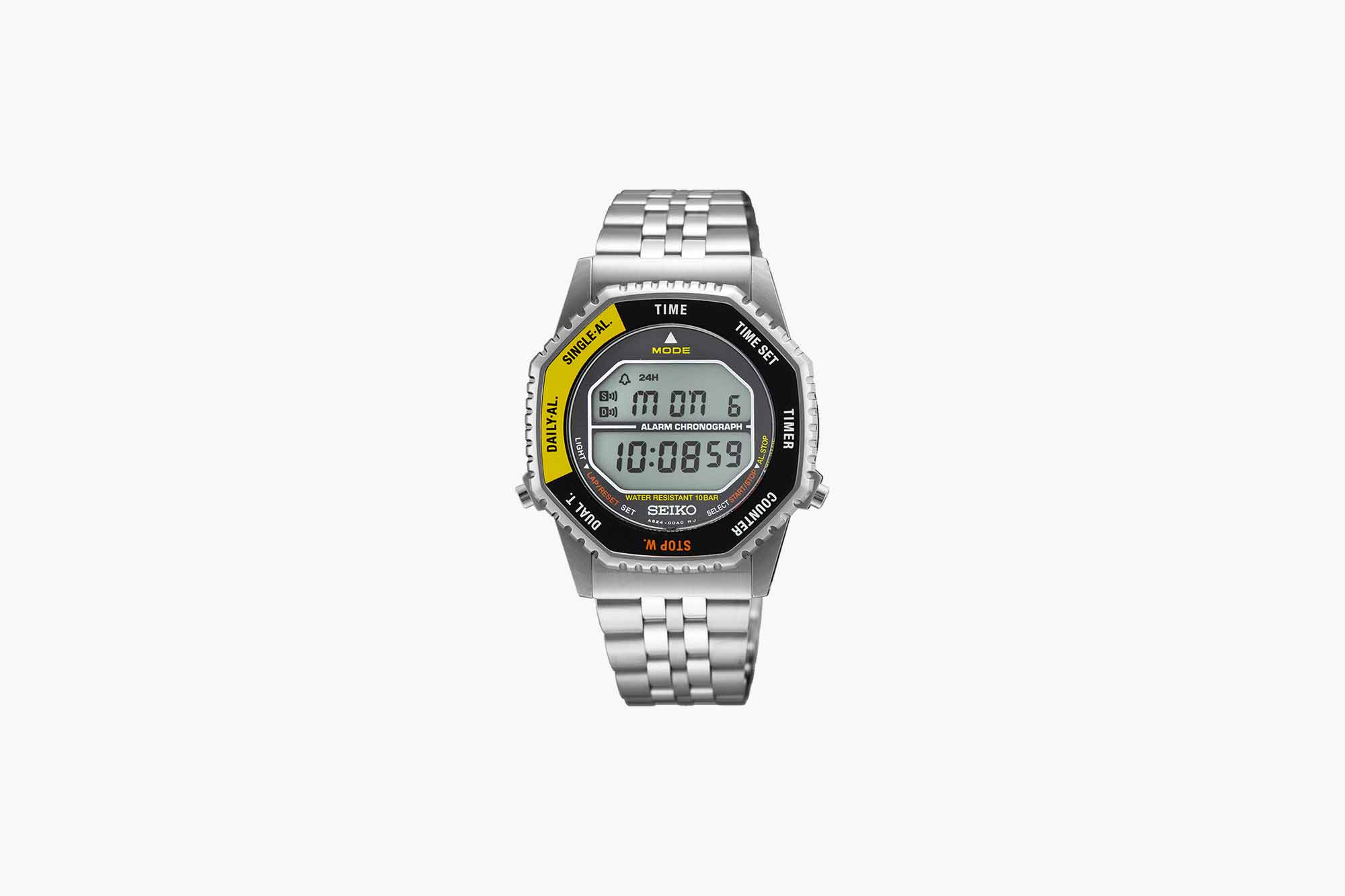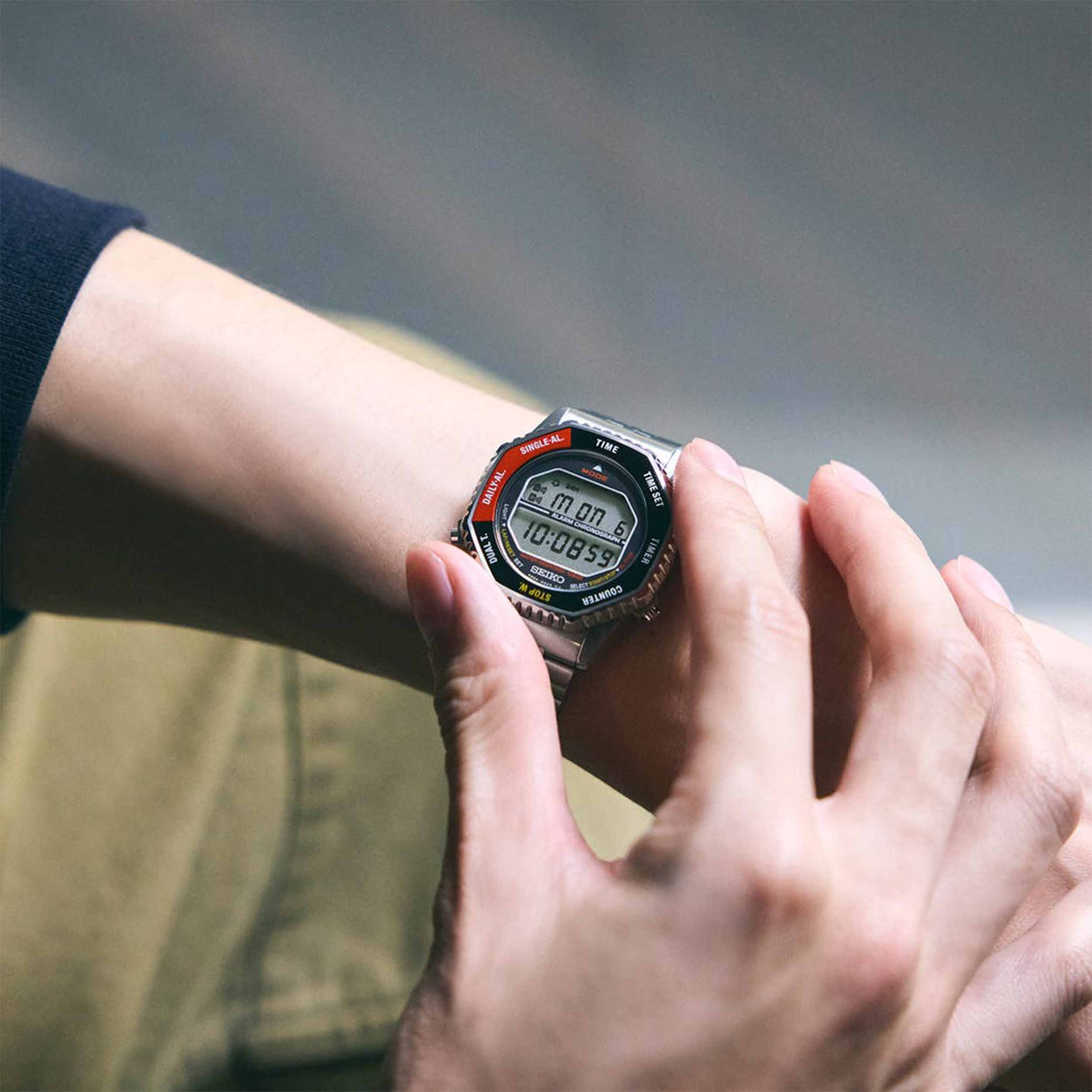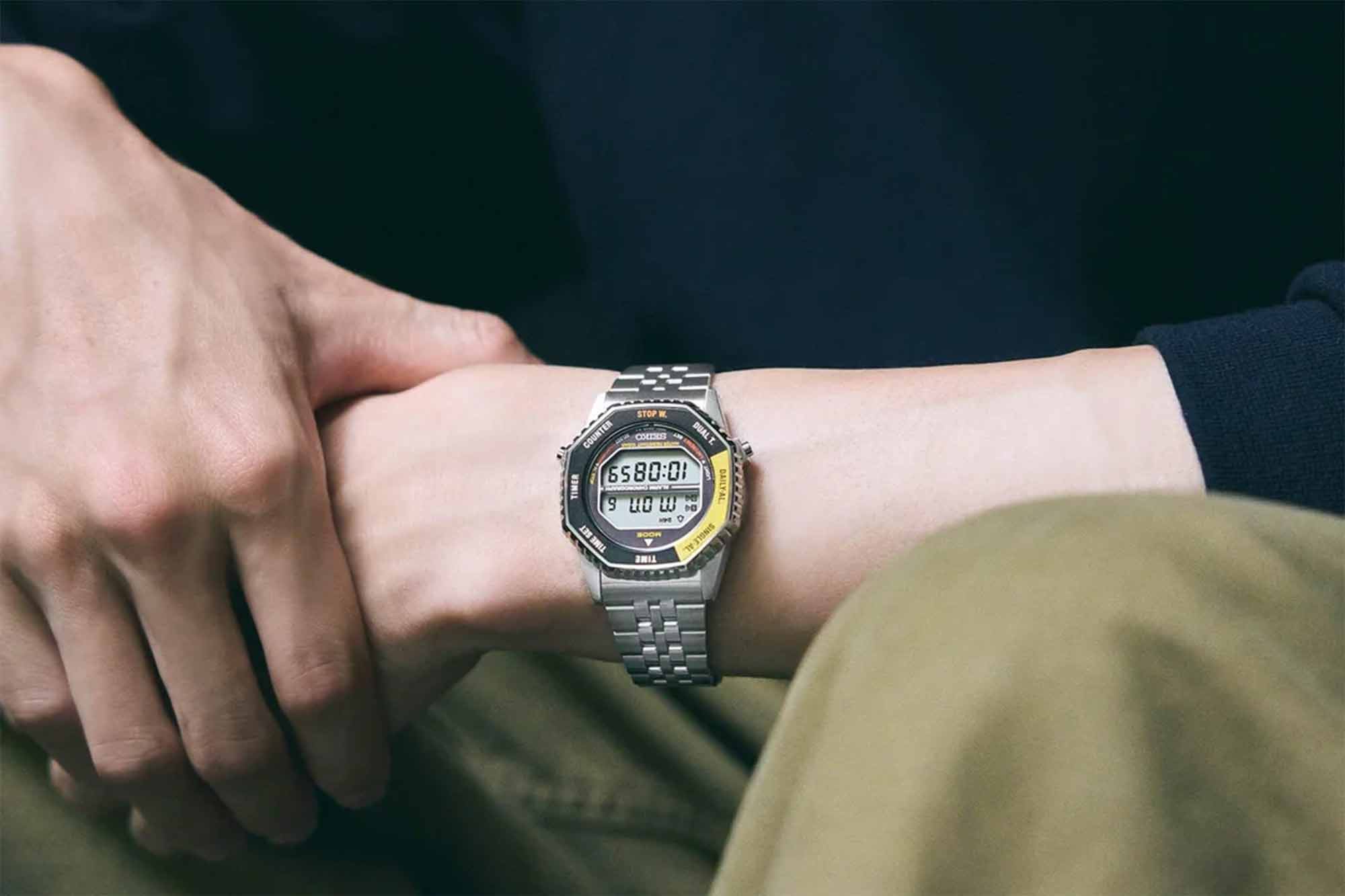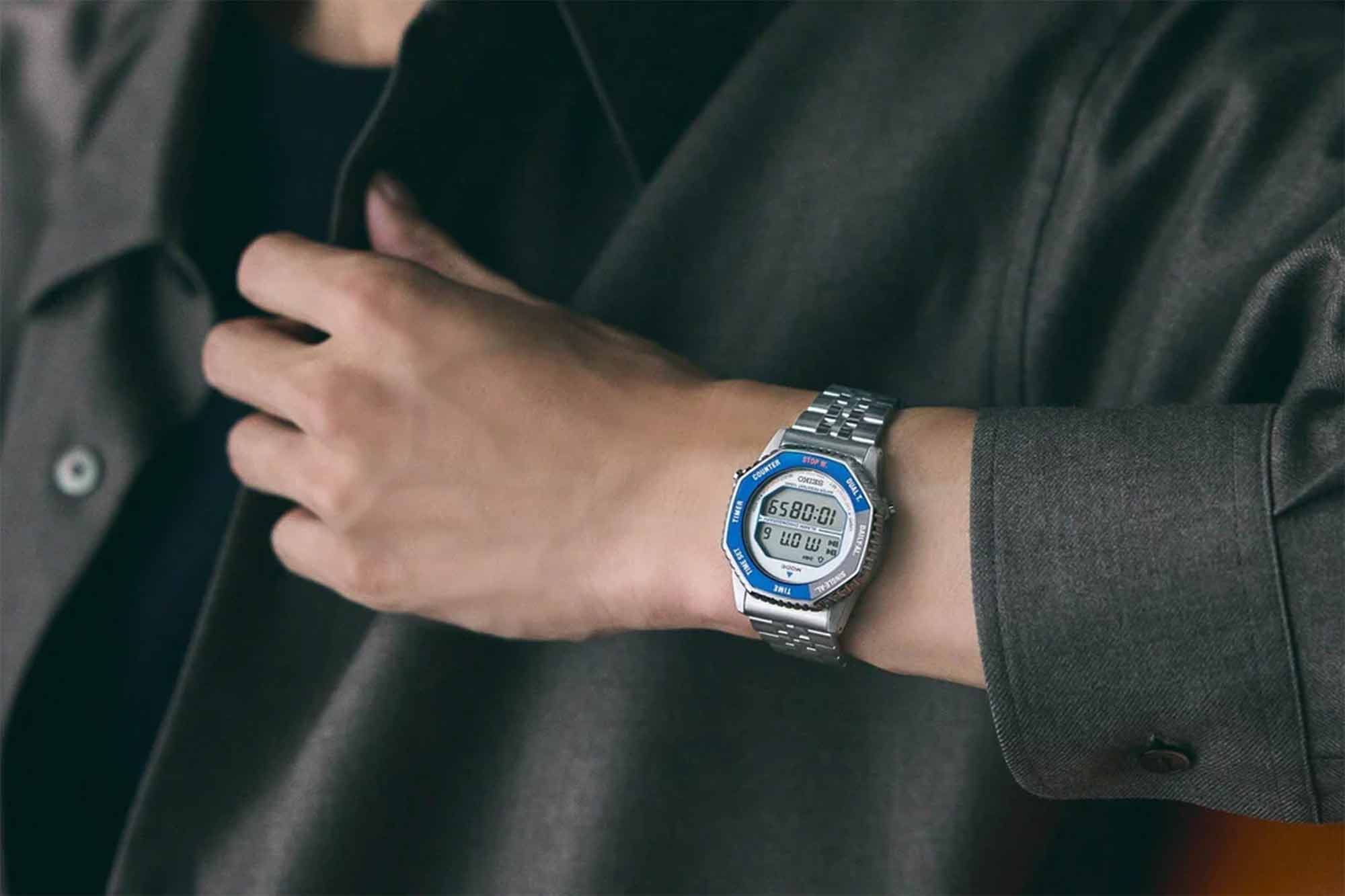Seiko’s latest is as surprising as it is satisfying. The reissue of the Rotocall, a digital watch born in 1982, worn by astronauts, and beloved for decades by fans of oddball 80s quartz, is completely unexpected, but finds Seiko working in the register we love to find them in. Which is to say, raiding the archives in a meaningful way that breathes life into classic references and references you might not actually know too much about. I have a feeling the Rotocall might fit into both camps. That’s the nature of a cult favorite, after all.
The original Rotocall reference, A829-6019, was conceived as a digital watch that would be a bit easier to operate and use but not lose any of the inherent functionality of a watch meant to perform in multiple disciplines. Rather than a complex menu system or arcane mode switching using a series of buttons, the Rotocall’s functions could be changed quickly by rotating the distinctive octagonal bezel. Setting the time, using a countdown timer, activating stopwatch functionality, and more are all clearly defined by the bezel position. Once you move the bezel to the desired function, a pair of buttons on either side of the case control the action. Think about some of the more complicated digital watches out there and how you might actually navigate from the time display to, say, a calendar, and you start to realize the value here. The simplicity, according to Seiko, was favored by many astronauts, and the Rotocall saw action on well over 100 spaceflights.
All three new Rotocall colorways are offered in 37mm stainless steel cases that measure 10.9mm tall. The lug to lug measurement is 43.5mm. The SMGG17 has a yellow and black bezel, the SMGG19 is red and black, and the SMGG21 has a bezel in gray and blue. All feature a two-sector digital display protected by a Hardlex crystal and are mounted to a matching steel bracelet with five links.
The bezel can be rotated in either direction and is clearly labeled to let the user know which mode they happen to be in at any given time (the “Mode” text with an arrow at 12:00 makes it fairly fool proof). Most users will likely spend most of their time in the “Time” mode, but a quick turn to “Time Set” allows for resetting time, ditto for timer, stopwatch, counter, and dual time settings.
The retro nature of this release is perhaps initially the most interesting thing about it, but I think once people begin to consider the practicality of a digital watch that’s so easy to use, Seiko could conceivably expand and iterate on this concept in a number of ways. It’s an old joke in the watch world that no matter how many G-SHOCKs you may have encountered, they always seem to require a how-to video on YouTube to set properly. There’s definitely room in the market for a true multi-function digital watch whose primary selling point is that it’s straightforward and easy to set up initially and use day to day. This one is also just a lot of fun for fans of quirky 1980s design.
Not a whole lot is known as of yet in terms of worldwide availability of the new Rotocall, but pricing is set at £480. Seiko
The post The Seiko Rotocall, a Cult Favorite From the 1980s, is Back appeared first on Worn & Wound.



